French PostcardsPrevious | French Postcards Index | NextHome |
A. Bergeret et Cie, Nancy There is an excellent web site on the postcards of Albert Bergeret (1858-1932) at Bergeret. During his time in the French army from 1879-1884 he learned the technique of collotype printing. In 1886 he set up a printing shop at Nancy, France, and started to specialize in postcards in 1888 with fairly conventional citiscapes and military themes. The business prospered and in 1902 he employed over 100 workers. The business was reorganized several times, and their most important commission was the production of postcards for the International Exposition at Nancy in 1909. Over two million visitors attended. In 1901 he started production of 'fantasy' postcards, of which the "Les Dentelles" set of 10 seems typical. Bergeret is so famous for this genre that for years it was thought he produced nothing else. The additional card at the bottom of the page follows the same general pattern as the other lace cards, but without the elaborate formating. It is dated 1905, which seems a year or two later than the original set. This odd card is a mystery. The design of the lace used on each card seems appropriate to each type, however it is hard to tell if it is all handmade. The Chantilly and Valenciennes seem a bit too stiff to me. I'm not sure what to make of the Alencon. The Venise is definitely chemical, although quite good. The Bruxelles and Point d'Angleterre, if real, are spectacular pieces although without a closer look, I'd sign off on the Angleterre before the Bruxelles. The Le Puy is a simple Torchon that could have been made anywhere. The repetitive design of the Irish Crochet might give one pause. The Luxeil looks good. The women in the photos are quite a mix - some are posed specifically for the lace theme. Some seem to resemble chorus girls or actresses - one could probably track down some names with a little effort. The woman with her 'Point de Venise' crown is hilarious. And I love the dominatrix with her whip-like lorgnette in the 'Renaissance' lace card. Her lace is almost as interesting as she is - it appears to stem from the flemish-milanese developments of the later 19th century, for which there is little documentation. Production of the 'fantasy' cards ceased in 1908, probably due to the press of business for the Exposition. Around the time of WWI, collotype was replaced by the photogravure technique, and unfortunately, Bergeret did not keep pace with the times. His son, Léon Bergeret, who fought in the war, was also a postcard printer, known primarily for his work in the 1930's. first posted 3/1/2009 |
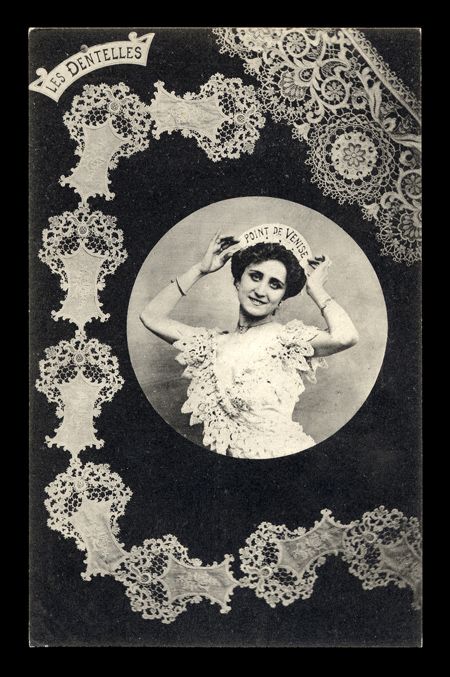
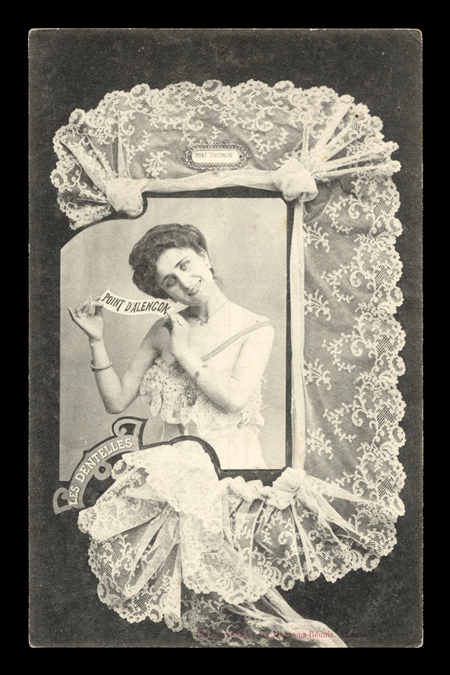 click here for reverse click here for reverse 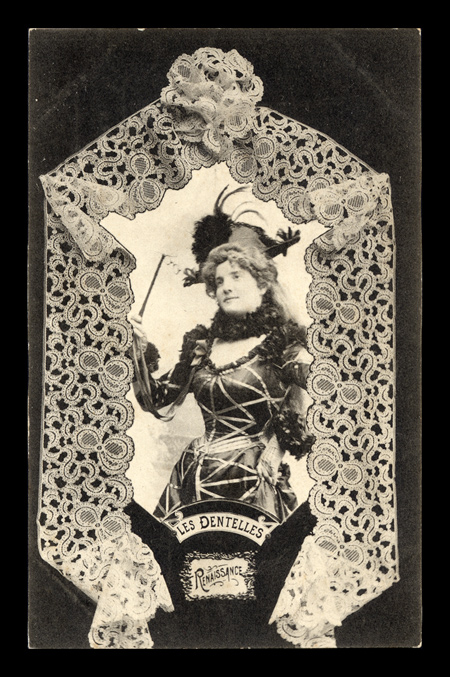
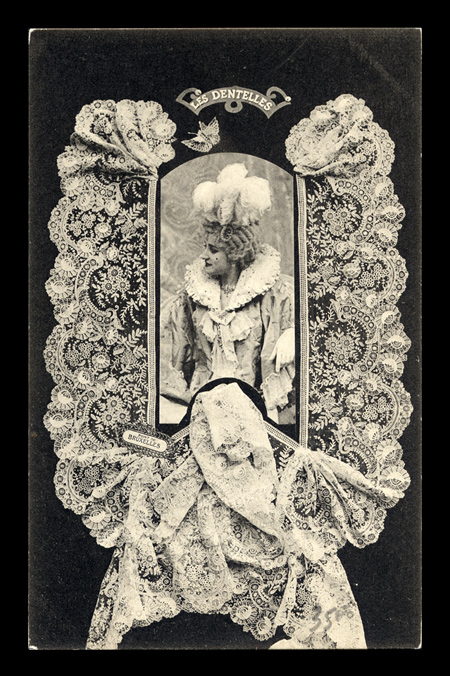 click here for reverse click here for reverse 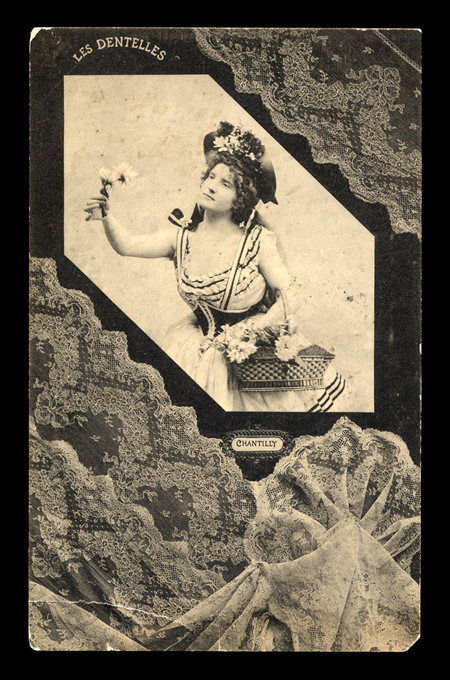
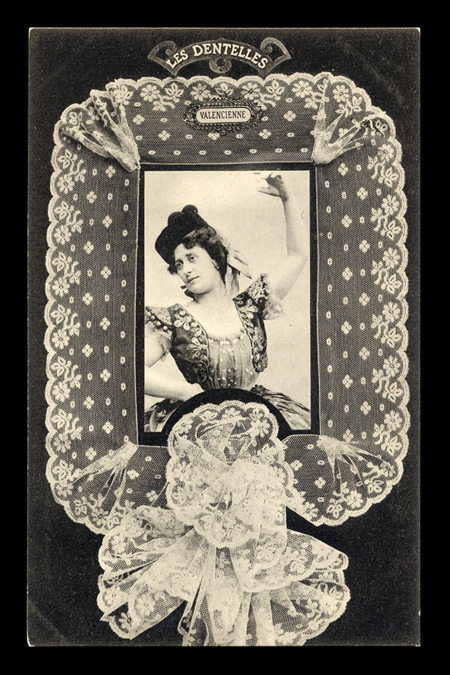 click here for reverse click here for reverse 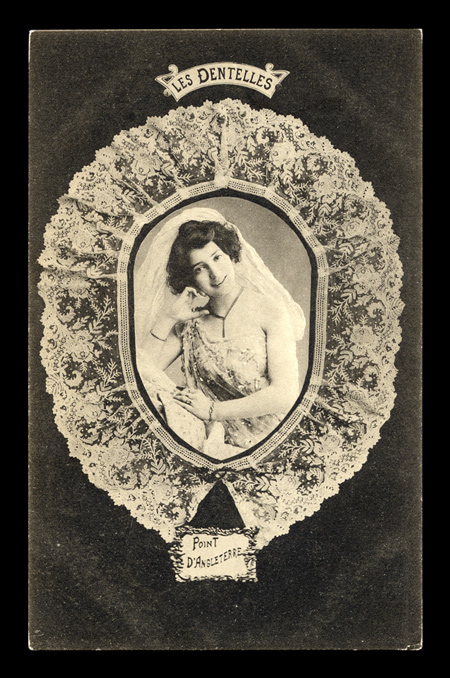
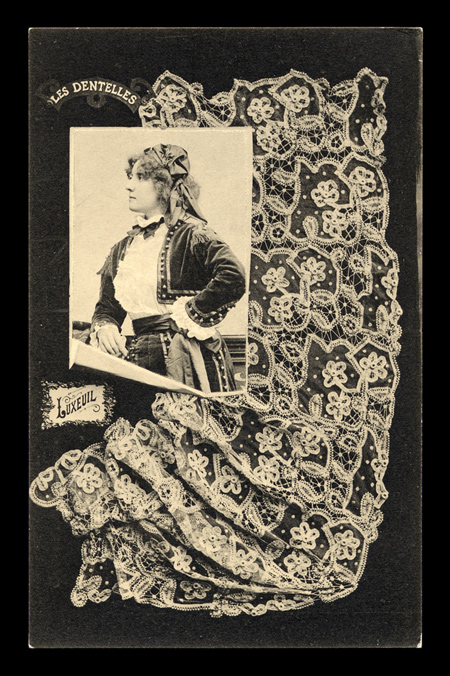 click here for reverse click here for reverse 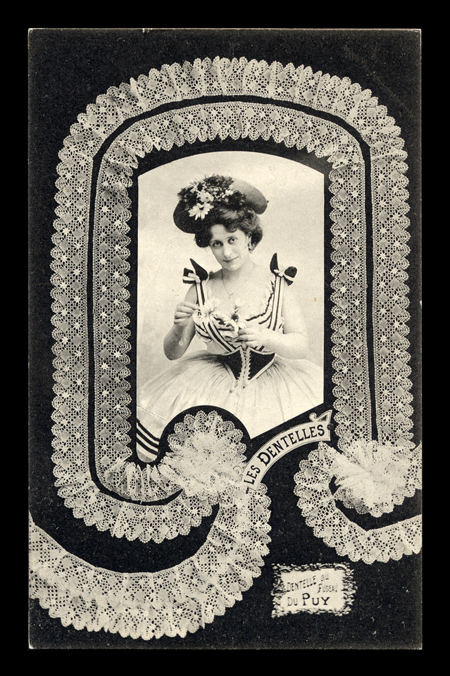
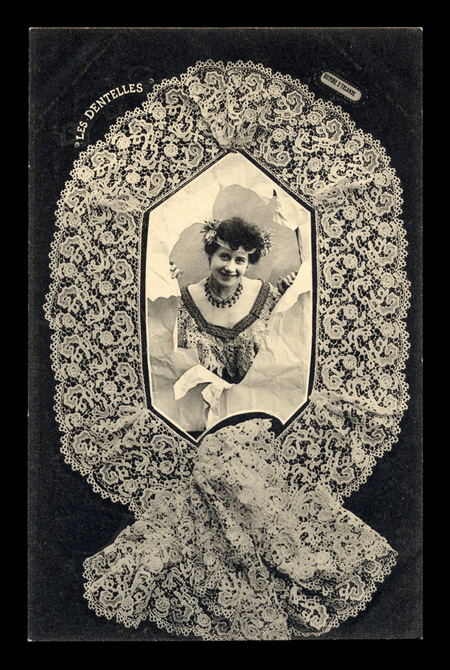 click here for reverse click here for reverse 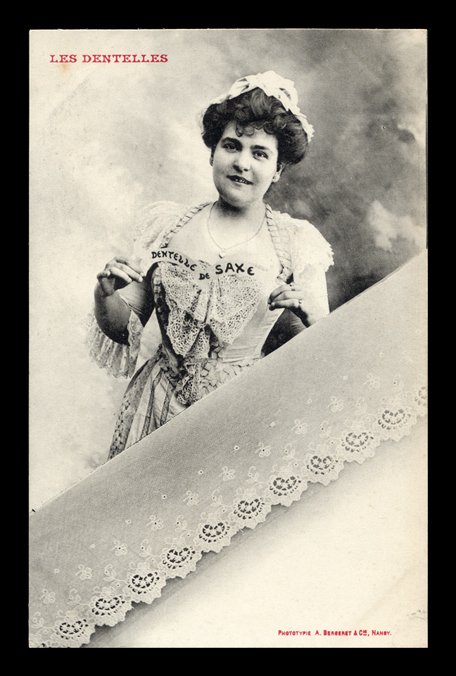
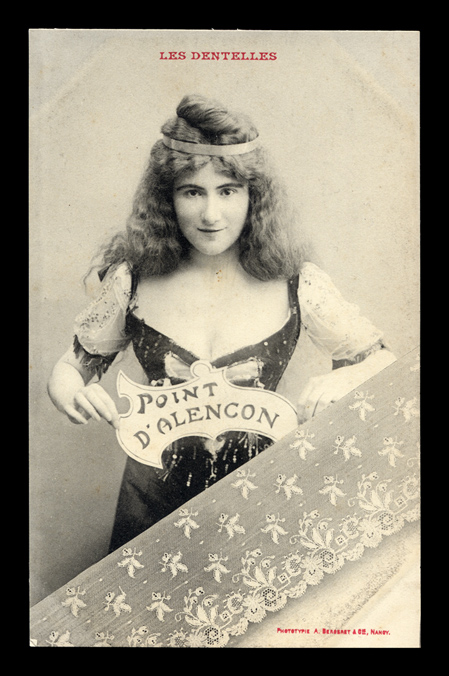 click here for reverse click here for reverse 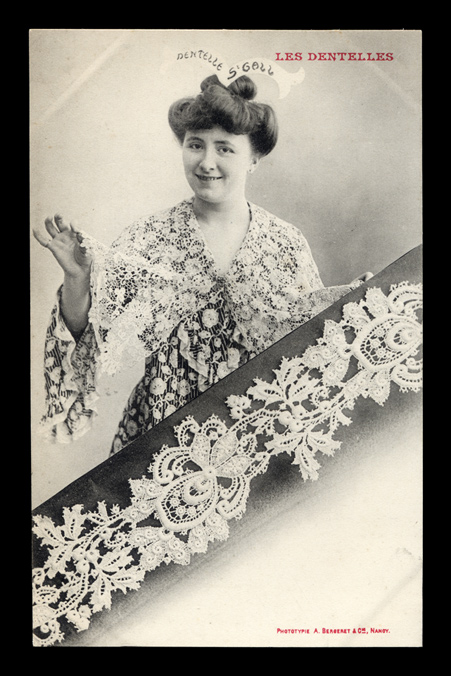
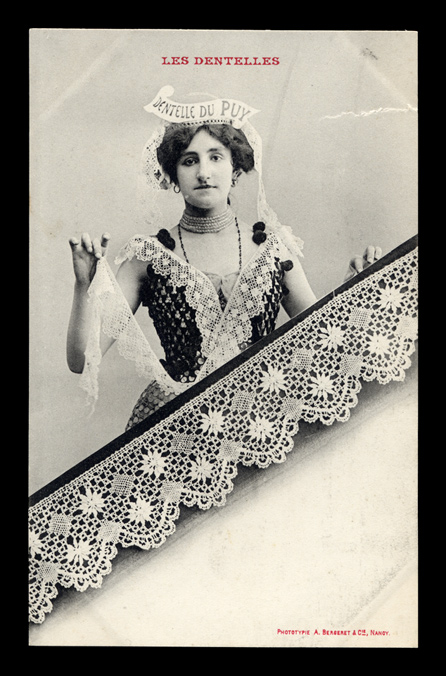 click here for reverse click here for reverse 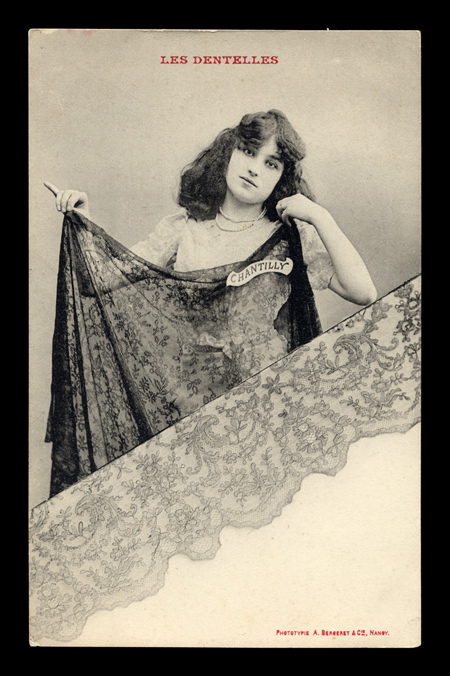
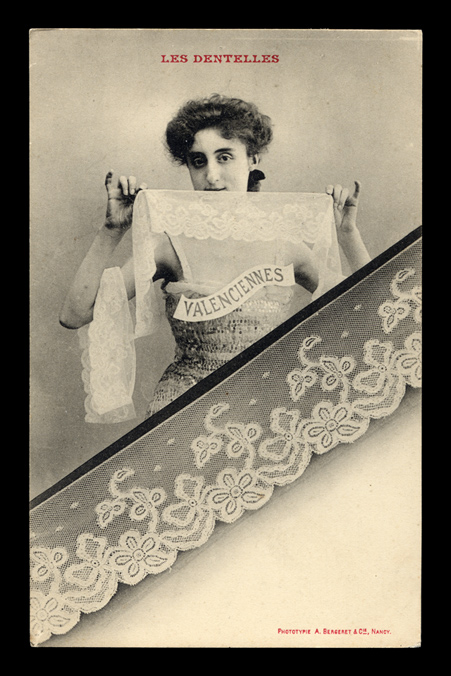 click here for reverse click here for reverse 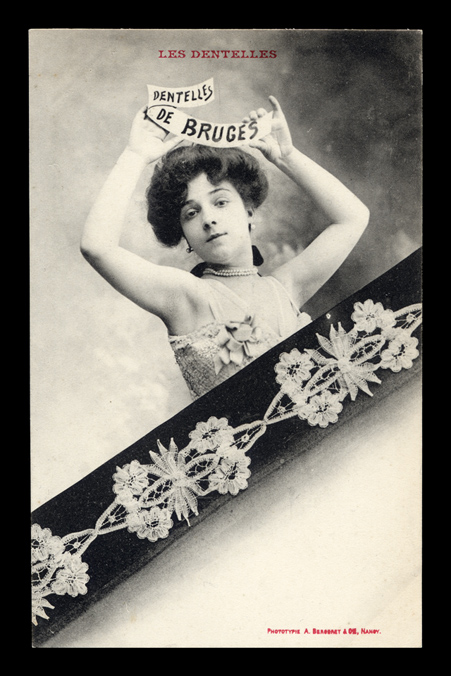
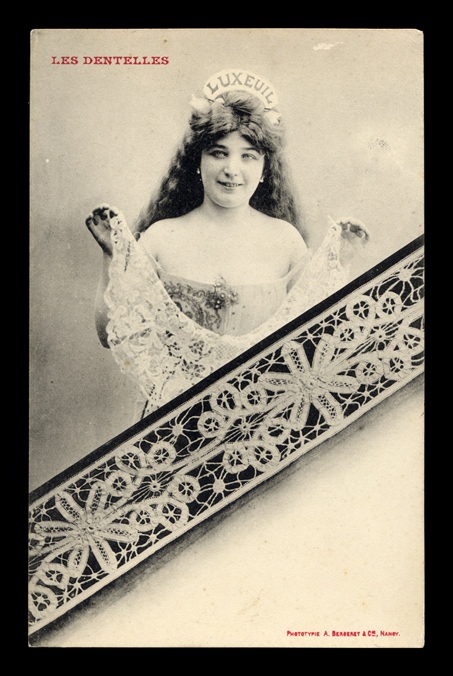 click here for reverse click here for reverse 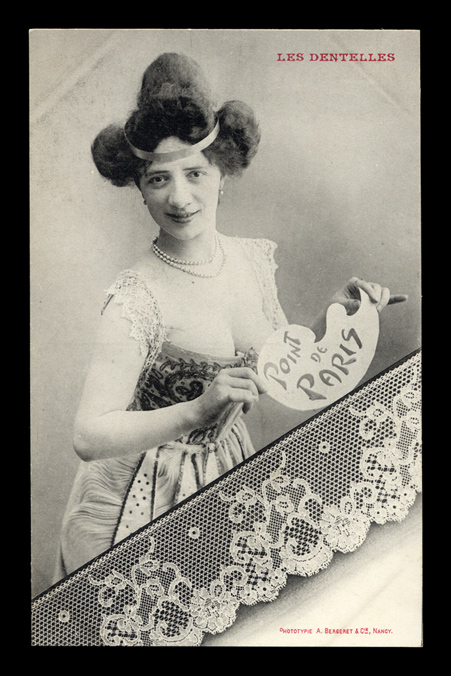
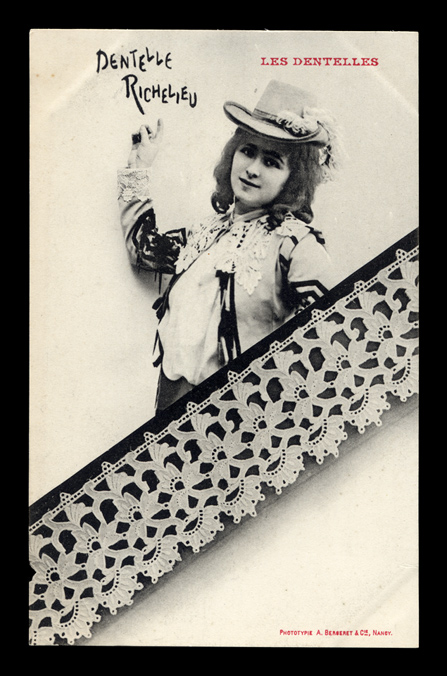 click here for reverse click here for reverse |